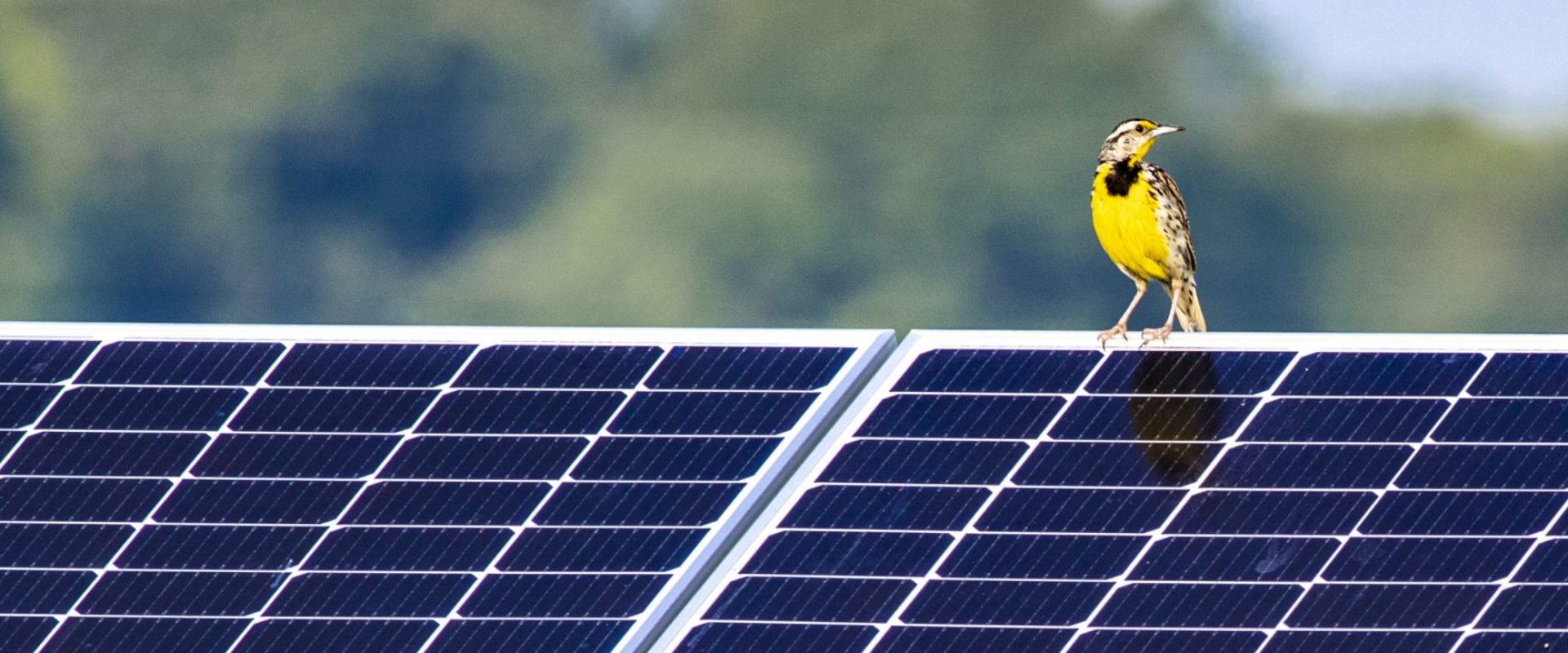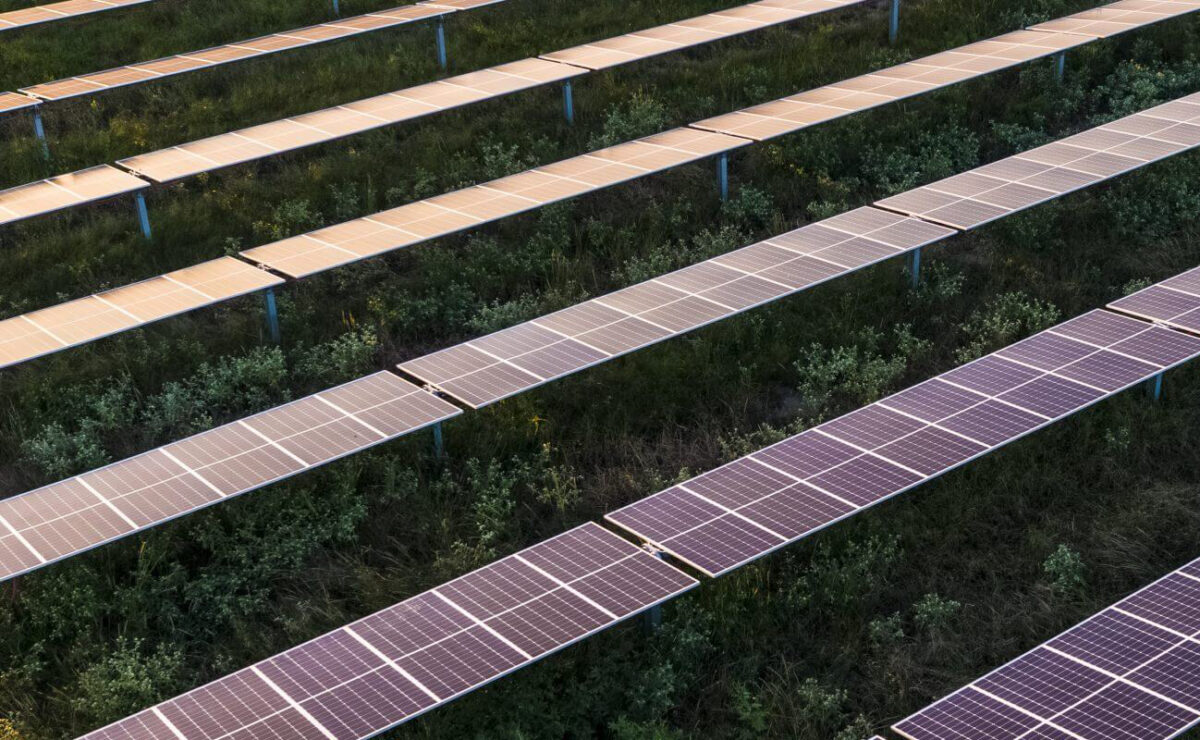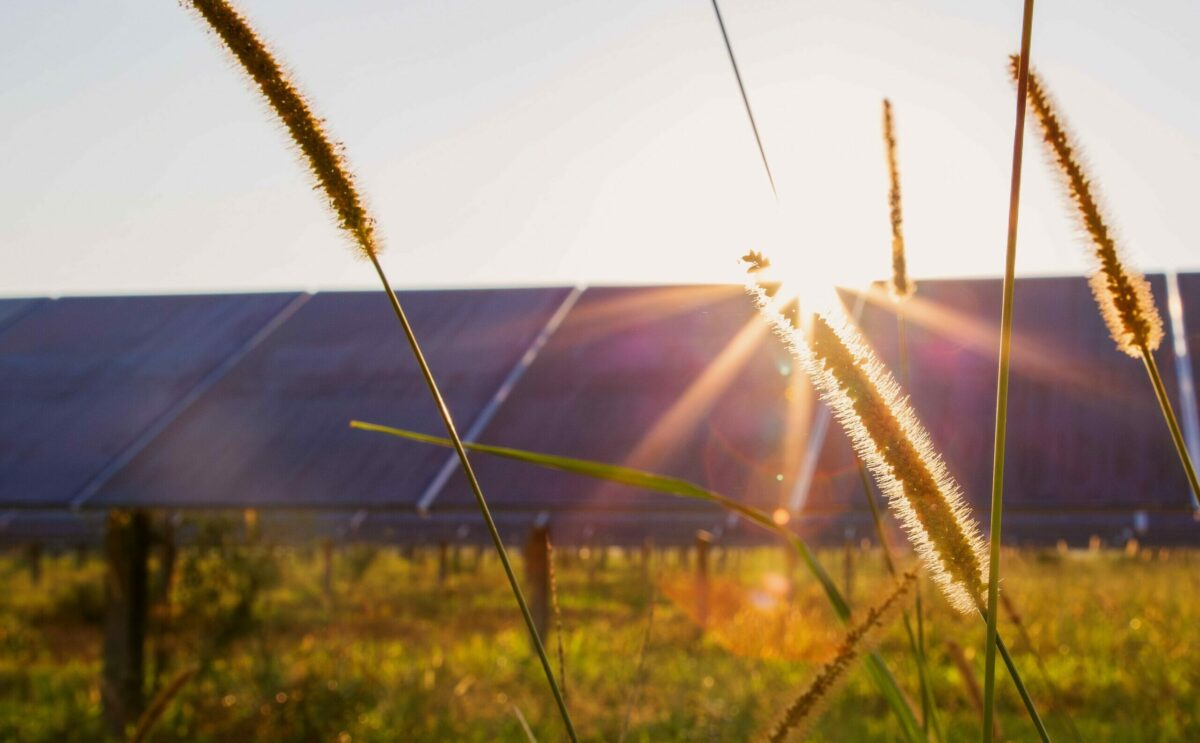Preserving habitat and integrating agriculture at Impact Solar
Multiuse solar provides a way for clean energy generation to share land with other activities, typically agriculture or nature conservation. At Impact Solar in Texas, Lightsource bp is demonstrating a multiple land use approach that integrates all three: housing wildlife habitat, agriculture, and utility-scale solar at one site.
Pre-development, the 260MW solar farm site was primarily agricultural pasture and cropland, featuring small patches of native riparian, woodland, and grassland ecosystems. To preserve the land’s agricultural use, Lightsource bp has partnered with a farmer to graze more than 600 sheep within the solar arrays. In addition, Lightsource bp is protecting existing ecosystem areas on-site, while establishing new habitat enhancements, layering several conservation strategies over 250 acres.
Promoting pollinator conservation
Pollinators such as butterflies, bees, birds and bats support plant reproduction and reinforce strong and resilient ecosystems. Three-fourths of the world’s flowering plants and about 35 percent of the world’s food crops depend on animal pollinators to reproduce. Some scientists estimate that one out of every three bites of food we eat exists because of animal pollinators. Habitat loss, climate change, and agricultural pesticide use have caused a great decline in pollinator populations. To support these species, Lightsource bp is creating and managing vegetation to support pollinator populations at our solar farms.
At Impact Solar, we have designated 12 acres to support two high-density pollinator gardens, where native vegetation will bloom from April through October.
Enhancing wildlife habitat
We have selected five areas throughout the site to establish shelters for reptiles, amphibians, and mammals. These hibernacula consist of an underground hole, backfilled with rocks, and covered with logs and soil for insulation and to mimic nature. Each habitat area is located safely upland, with access to water, sunlight, open grass, and trees.
To provide habitat for birds and bats, we’ve placed artificial nesting and roosting structures in five areas throughout the Impact Solar site. These bird and bat boxes are located near woodland areas and spaced to avoid competition and predators.
Protecting riparian woodlands
Riparian ecosystems, located adjacent to rivers and streams, are important for biological diversity. Wildlife use these areas to travel across the landscape for food, cover, and breeding. These high-value ecosystems systems tend to be less disturbed, and therefore are more prone to function as protected species habitat than upland areas.
Within the Impact Solar site boundaries, approximately 50 acres of woodland habitat adjacent to the floodplain of the Bee Bayou will remain undisturbed and in conservation for the up to 40 year lifespan of the project. This will help encourage wildlife movement throughout the area, protect water quality and reduce soil erosion.
Grazing sheep at the solar farm
The Impact Solar facility is also supporting solar grazing, a form of agrivoltaics that introduces sheep to solar farms. This keeps the land in agricultural production throughout the solar project’s life.
At Impact Solar, nearly 2,000 sheep are chomping on vegetation to “mow the lawn” naturally. It is thought to be the largest year-round grazing site in the United States. As they eat, the sheep will spread manure to fertilize the soil. Sheep also attract beneficial insects and combat invasive weeds as they forage. Watch the video below to meet the solar shepherds caring for the flock and to learn more.
Discover Multiuse Solar
This project is one example of our commitment to co-locating responsibly sited solar projects with other land uses in the United States—an approach dubbed “dual-use solar.” Lightsource bp often goes a step further, building multiuse solar projects where clean energy generation shares land with multiple initiatives including agriculture, conservation, and research.
Related news
03 Apr, 2024
Podcast appearance: Our innovation team busts myths on solar and extreme weather
Solar works in extreme weather conditions.
14 Mar, 2024
Barclays and Lightsource bp agree $140 million tax equity deal for solar project in St. Landry Parish, Louisiana
$140 million tax equity for Prairie Ronde Solar




